Location: Nara, Japan
Duration: 1 day (+ overnight stay)
Period: March 2018
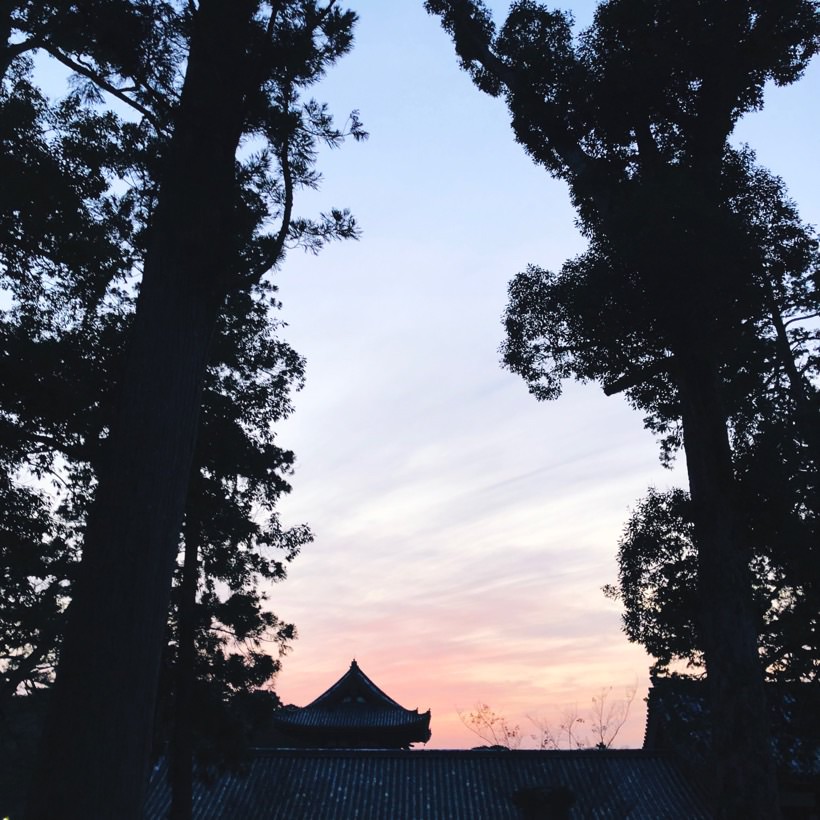
Nara used to be the old capital of Japan, and nowadays it's mostly known for its shrines (which are also part of the UNESCO World Heritage, like the ones in Nikko and Kyoto) and its hundreds of tame deer which roam the area freely. It's a 50 minute train ride from Kyoto, so it's easy to just hop on a train to get there.

The Todaiji temple
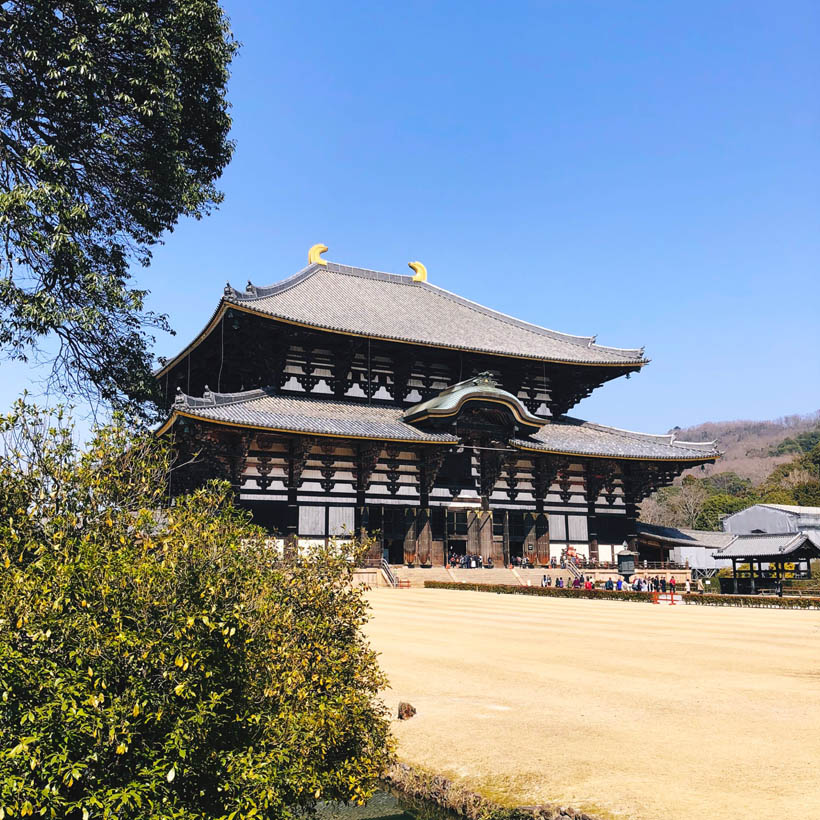
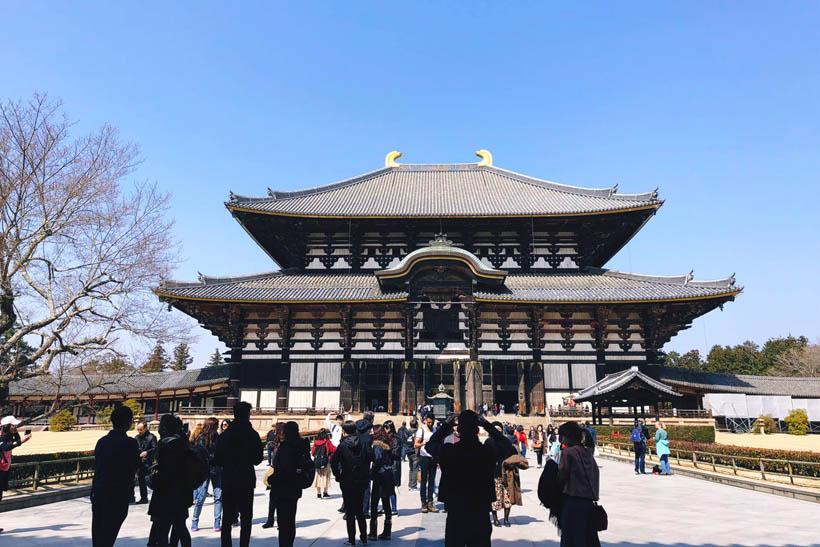




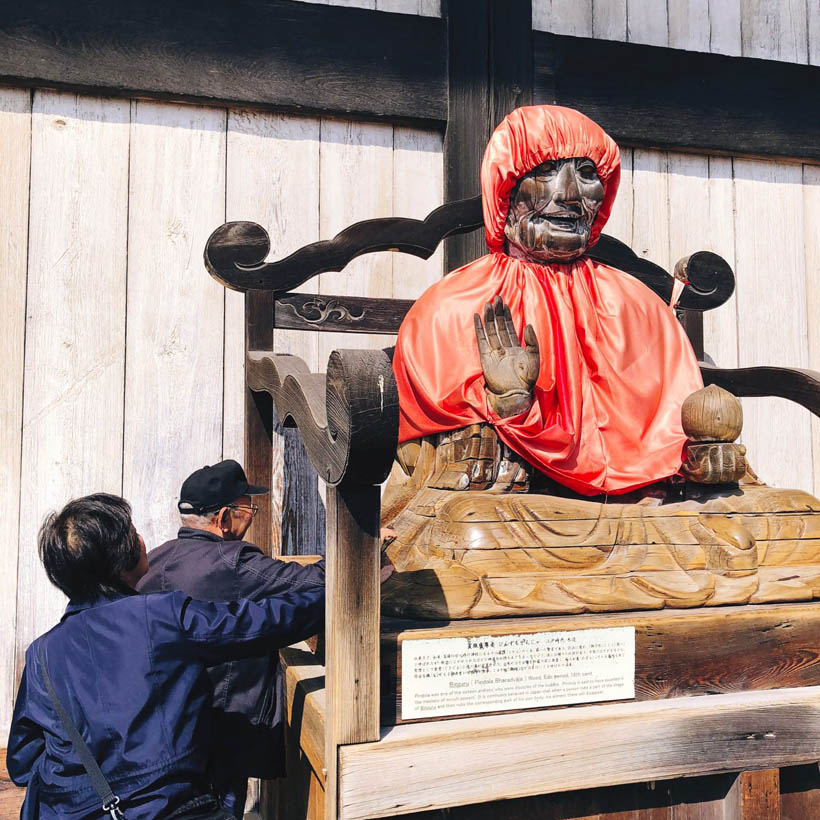
After a short walk from the center of Nara (it's a small city which you can easily cover by foot) we got to the Todaiji temple complex, the main tourist attraction of the city. It's mostly known for the Daibutsuden, the large wooden temple which you can visit for a small entrance fee. The temple burned down a couple of times in the past, but it was always rebuilt with more or less the same structure. The current incarnation is the smallest one yet strangely enough, but it's still massive.
Equally impressive is the gigantic Buddha statue inside, which is a giant bronze construction of about 15 meters (49ft) high, which is accompanied by a number of slightly smaller statues of guardians and gods.
The hall also contains a few relics and mockups of previous versions of the temple.
Nara Park

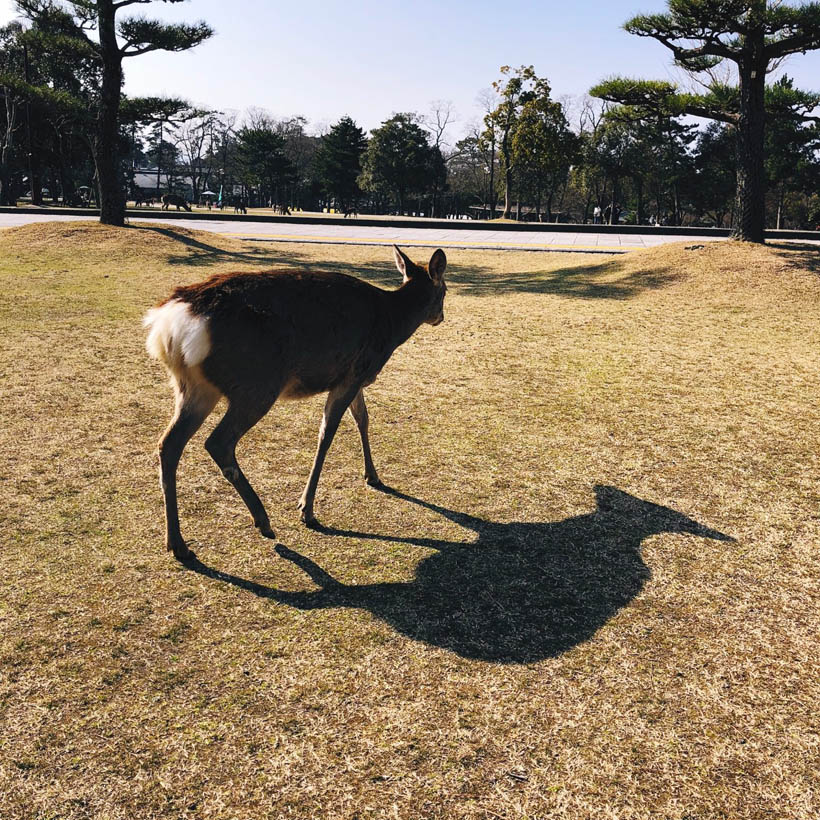
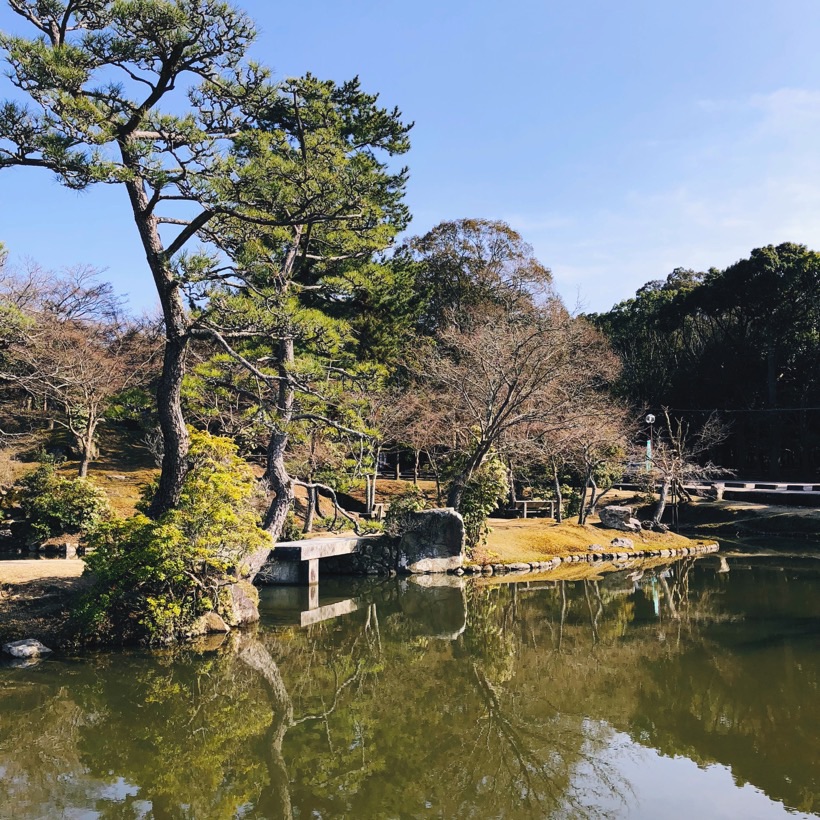
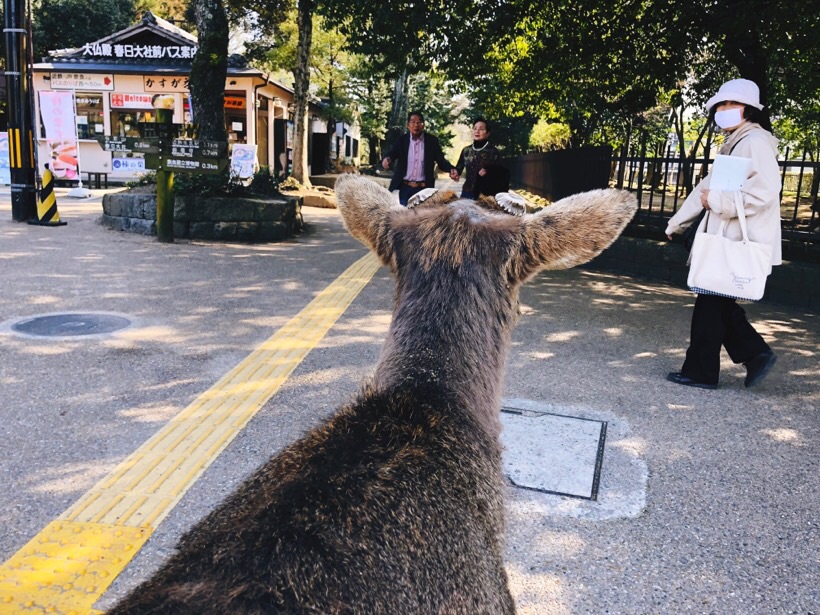
The Todaiji temple is also partly located in Nara Park, a large park to the east of the city center and filled with friendly deer - until they smell food and start hunting you. If you buy one of the snacks in the area (like, say, a baked sweet potato), make sure there are no mammals around.
You can also work around this by buying the deer special cookies, which a lot of vendors nearby are eager to sell you. The deer expect you to buy this seemingly, as they will stare at you until you either walk away or you feed them.
Food in Nara
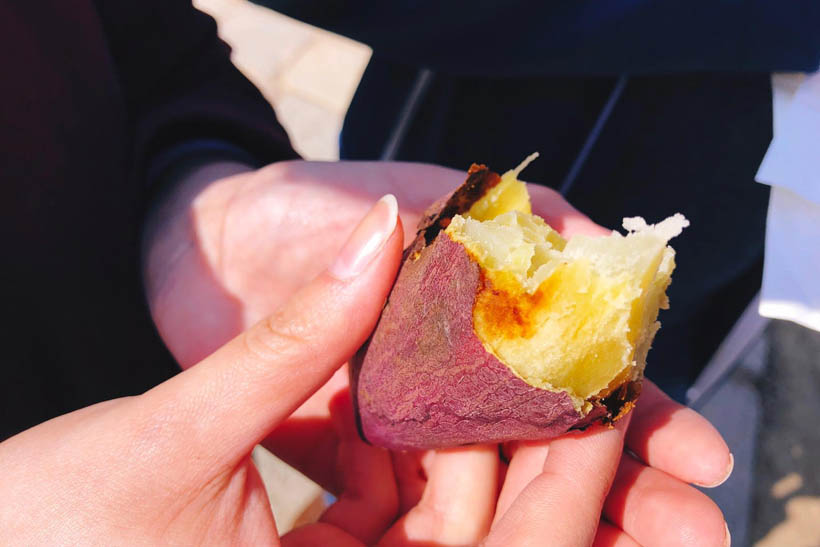
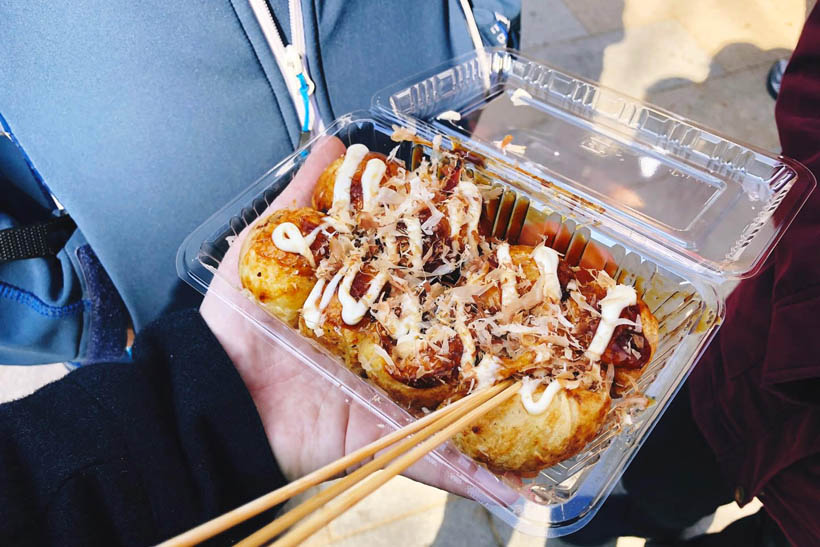
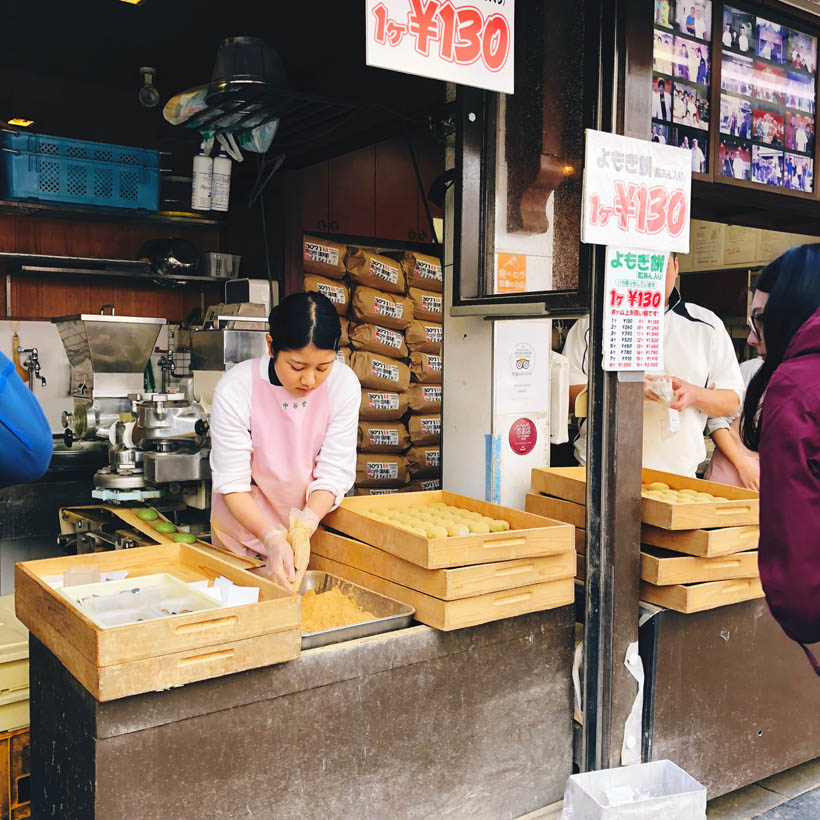
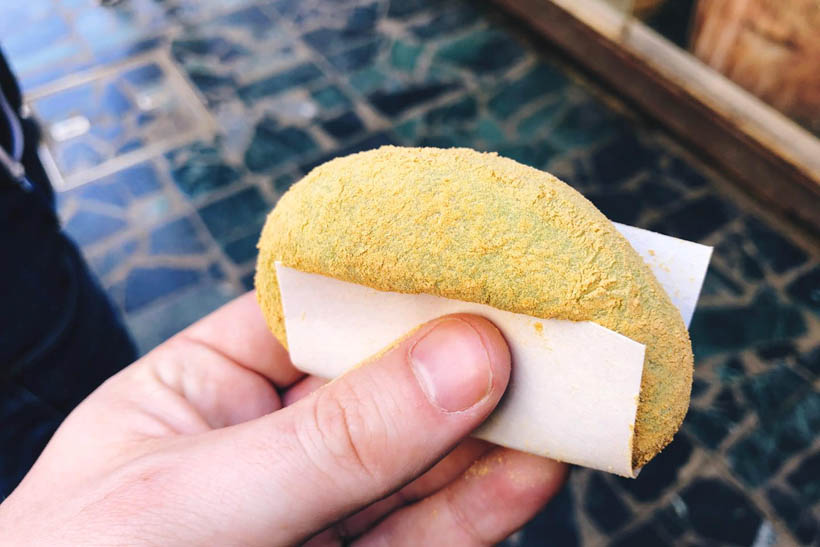
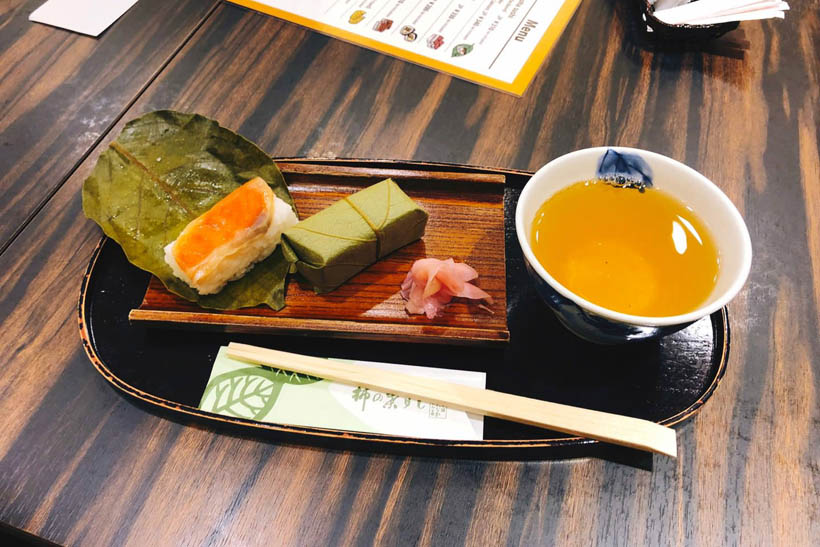
You can also find a small street in the park with a high concentration of food stalls and restaurants. We went straight for the stand that sold takoyaki, dough balls filled with pieces of octopus and topped with a sweet sauce, sweet Japanese mayonnaise and dried bonito flakes (which appear to be dancing due to the heat of the batter). It's a surprisingly hearty dish, but don't make the mistake we did by eating it straight away. Let it cool off for a bit, trust me.
Back in the center of Nara we came across a mochi store were they make this rice snack right in front of you, and apparently they also put up a show when they mix the rice flour for the snack. We only saw the machines doing their thing, before the snacks mysteriously placed themselves in our hands and in our mouths. Hmmmm.
One of the local specialities is persimmon leaf sushi, sushi wrapped in - you guessed it - a persimmon leaf. It's similar to regular nigiri sushi, but it's wrapped and compressed tightly inside the leaf for a few days, causing the taste of the leaf to be added to the sushi. It wasn't really to my tastes, but I'm glad that I tried it at least.
Otaimatsu at the Omizutori festival

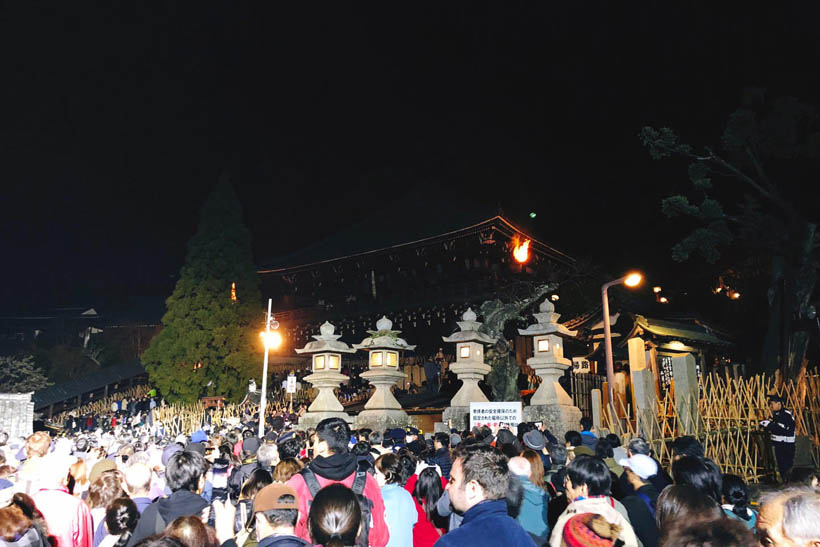
When we booked our trip we thought we would just hang out in Nara for a day and that we would go to Osaka the next day, but a few weeks before arriving we found out there's a yearly tradition in the city at the same moment we would be there, called Omizutori, an event in March which, in part, also covers Otaimatsu, a torch festival at the Nigatsudo hall near the Todaiji temple.
The event involves large wooden torches (which are set on fire, obviously) that are carried across the balcony so that the embers sprinkle over the audience to bring good luck to them in the new year. This event is repeated every evening for two weeks, but on the day we were there (12 March) the amount of torches (and thus also the amount of fire) was increased (this always happens on the 12th day of the festival).
We went to the Todaji temple quite early to secure a spot in front of the entrance, and soon after thousands of people also joined in on the waiting. It was very crowded, but also handled in a typical Japanese fashion: video screens were hung up with announcers describing the festival, policemen were keeping everything in control, and, most importantly, everyone was forced to follow a specific path at a specific walking speed, to make sure that everyone could see the burning torches.
It was a strange way to do things, but it worked out perfectly as a way to do crowd control (but I don't see it working in Europe or in the US).
Other posts about this trip
- Our travel video of Japan
- Exploring the different neighbourhoods of Tokyo
- Visiting Nikko for half a day
- Discovering the ancient history of Kyoto
- Burning torches at the Omizutori festival in Nara (this post!)
- Attending a sumo honbasho in Osaka
- Eating Wagyu beef and walking around in Kobe
- Hiroshima and the aftermath of the atomic bomb
- Climbing Mount Misen in Miyajima and a quick stopover in Okayama
- Hakone (coming soon)
- Hakodate (coming soon)
- Sapporo (coming soon)
- Otaru/Yoichi/Noboribetsu (coming soon)